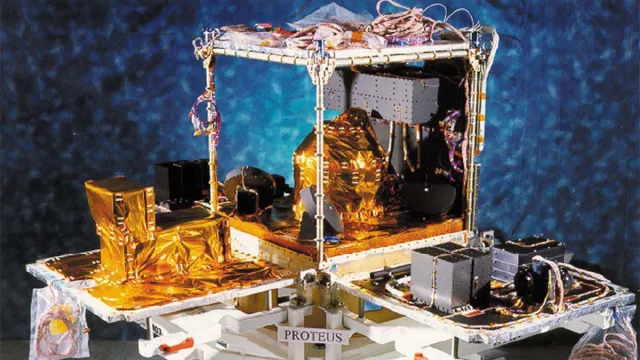CNES’s Proteus series of spacecraft buses is designed for satellites in the 500-700-kg class operating in low-Earth orbit.
Key information
Key figures
- 500 to 700 kg: mass of satellites accommodated by bus
- 6 satellites accommodated by bus to date
- 95.4 cm x 95.4 cm x 100 cm: bus dimensions
- 450 to 550 W: power delivered to payload
Key milestones
- 17 January 2016: Launch of Jason-3 built around Proteus
- 2 November 2009: Launch of SMOS built around Proteus
- 20 June 2008: Launch of Jason-2 built around Proteus
- 27 December 2006: Launch of CoRoT built around Proteus
- 28 April 2006: Launch of Calipso built around Proteus
- 7 December 2001: Launch of Jason-1 built around Proteus
- May 1996: CNES selects Thales Alenia Space to build Proteus spacecraft buses
- 1993: CNES gives go-ahead to develop Proteus series
Project in brief
CNES began development of its Proteus bus (Plateforme Reconfigurable pour l'Observation, les Télécommunications et les Usages Scientifiques) in 1996. Its main goal was to offer cheaper space access through a standardized series of spacecraft buses to foster new missions for satellites in the 500-to-700-kilogram class.
The Jason-1 altimetry satellite was the first to be built around a Proteus bus. Launched in 2001, its mission was officially terminated by CNES and NASA in 2013 after more than 11 years in orbit, far exceeding Proteus’s three-year design life. Four more missions using Proteus would follow: Calipso launched in 2006 by a Delta II vehicle; CoRot the same year by a Soyuz launcher; Jason-2 in 2008 by Delta II; and SMOS in 2009 by a Rockot launcher. The last Proteus bus in the series is flying on the Jason-3 mission launched in 2016 by a Falcon 9.
CNES’s role
Initiated by CNES, the Proteus series was conceived and built in partnership with Thales Alenia Space. Besides the bus design, it also called for the development of an orbit control ground segment. CNES’s Myriade bus for satellites in the 100-200-kilogram class and Myriade Evolutions bus for satellites in the 350-400-kilogram class draw on the heritage of Proteus.
Contacts
Proteus Series Manager and Project Leader
Philippe Landiech
E-mail: philippe.landiech at cnes.fr


